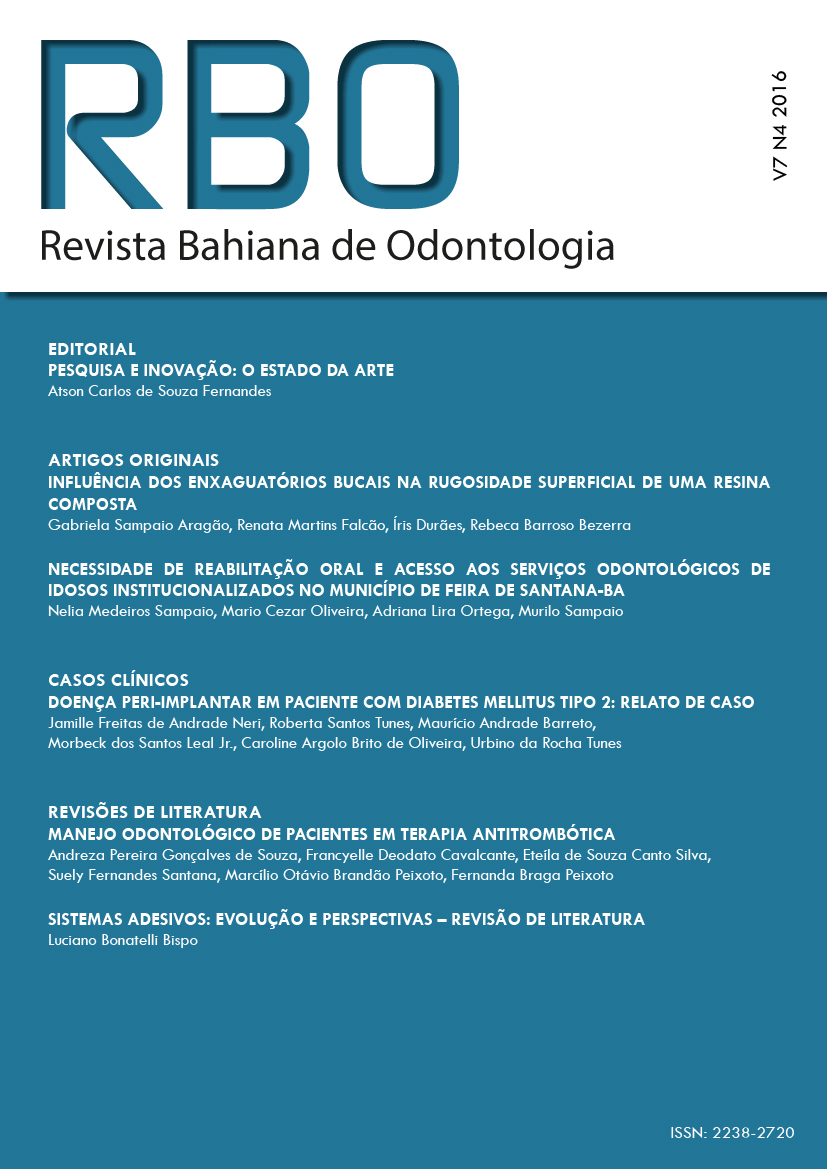INFLUENCE OF MOUTHWASHES ON SURFACE ROUGHNESS OF A COMPOSITE RESIN
DOI:
https://doi.org/10.17267/2596-3368dentistry.v7i4.936Keywords:
Mouthwashes, composite resins, dental plaqueAbstract
Surface smoothness is an important feature of restorative material. Thus, composite roughness levels should be low to make retention of dental biofilm. Alterations of the surface of composite resin restorations can be associated to drinks and acidic foods, components of saliva, finishing and polishing methods, as well as the action of bleaching agents, rinses and fluoride. Purpose: To evaluate the effect of mouth rinses in superficial roughness of composite resin through a quantitative evaluation. Methods: 48 specimens with composite resin FiltekTM Z350 XT were made and divided into 4 groups (n=12): distilled water, Colgate® Plax, Oral B® and Listerine®. Specimens were made using a rectangular matrix with holes, each measuring 0.8 cm of internal diameter and 0.2 cm in thickness. The specimens were immersed in 50 ml of each substance, for 12 hours, to simulate a year of daily use of the solution for 2 minutes. Then specimens were stored in distilled water until reading of the roughness tester. Data were statistically treated by ANOVA and Tukey tests, with a significance level of 95%. Results: No statistically significant difference was observed between the control group and Listerine® (p = 0.03). When comparing the average roughness of different brands of mouthwashes, there was no statistically significant difference (p > 0.05). Conclusions: Among the mouthwashes tested, only Listerine® caused statistically significant increase in superficial roughness of the composite resin used.



